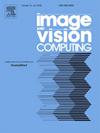具有混频意识的 RGB-T 跟踪
IF 4.2
3区 计算机科学
Q2 COMPUTER SCIENCE, ARTIFICIAL INTELLIGENCE
引用次数: 0
摘要
最近,基于变换器的 RGB-T 追踪器取得了令人瞩目的进展,这是因为变换器能有效捕捉低频信息(即高级语义信息)。然而,一些研究表明,变换器在捕捉高频信息(即低级纹理和边缘细节)方面表现出局限性,从而限制了跟踪器精确匹配搜索区域内目标细节的能力。为了解决这个问题,我们提出了一种频率混合感知建模 RGB-T 追踪器,简称 FHAT。具体来说,FHAT 结合了卷积和最大池化在捕捉变压器架构上的高频信息方面的优势。这样,它就能强化高频特征,增强模型对细节信息的感知。此外,为了增强两种模态之间的互补效果,跟踪器利用两种模态的低频信息进行模态交互,这样可以避免多模态局部细节不一致造成的交互误差。此外,这些高频信息和交互低频信息将被融合,从而使模型能够自适应地增强模态表达的频率特性。通过对两个主流 RGB-T 跟踪基准的广泛实验,我们的方法展示了具有竞争力的性能。本文章由计算机程序翻译,如有差异,请以英文原文为准。
RGB-T tracking with frequency hybrid awareness
Recently, impressive progress has been made with transformer-based RGB-T trackers due to the transformer’s effectiveness in capturing low-frequency information (i.e., high-level semantic information). However, some studies have revealed that the transformer exhibits limitations in capturing high-frequency information (i.e., low-level texture and edge details), thereby restricting the tracker’s capacity to precisely match target details within the search area. To address this issue, we propose a frequency hybrid awareness modeling RGB-T tracker, abbreviated as FHAT. Specifically, FHAT combines the advantages of convolution and maximum pooling in capturing high-frequency information on the architecture of transformer. In this way, it strengthens the high-frequency features and enhances the model’s perception of detailed information. Additionally, to enhance the complementary effect between the two modalities, the tracker utilizes low-frequency information from both modalities for modality interaction, which can avoid interaction errors caused by inconsistent local details of the multimodality. Furthermore, these high-frequency information and interaction low-frequency information will then be fused, allowing the model to adaptively enhance the frequency features of the modal expression. Through extensive experiments on two mainstream RGB-T tracking benchmarks, our method demonstrates competitive performance.
求助全文
通过发布文献求助,成功后即可免费获取论文全文。
去求助
来源期刊

Image and Vision Computing
工程技术-工程:电子与电气
CiteScore
8.50
自引率
8.50%
发文量
143
审稿时长
7.8 months
期刊介绍:
Image and Vision Computing has as a primary aim the provision of an effective medium of interchange for the results of high quality theoretical and applied research fundamental to all aspects of image interpretation and computer vision. The journal publishes work that proposes new image interpretation and computer vision methodology or addresses the application of such methods to real world scenes. It seeks to strengthen a deeper understanding in the discipline by encouraging the quantitative comparison and performance evaluation of the proposed methodology. The coverage includes: image interpretation, scene modelling, object recognition and tracking, shape analysis, monitoring and surveillance, active vision and robotic systems, SLAM, biologically-inspired computer vision, motion analysis, stereo vision, document image understanding, character and handwritten text recognition, face and gesture recognition, biometrics, vision-based human-computer interaction, human activity and behavior understanding, data fusion from multiple sensor inputs, image databases.
 求助内容:
求助内容: 应助结果提醒方式:
应助结果提醒方式:


